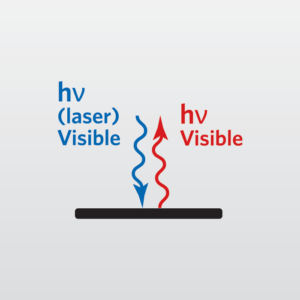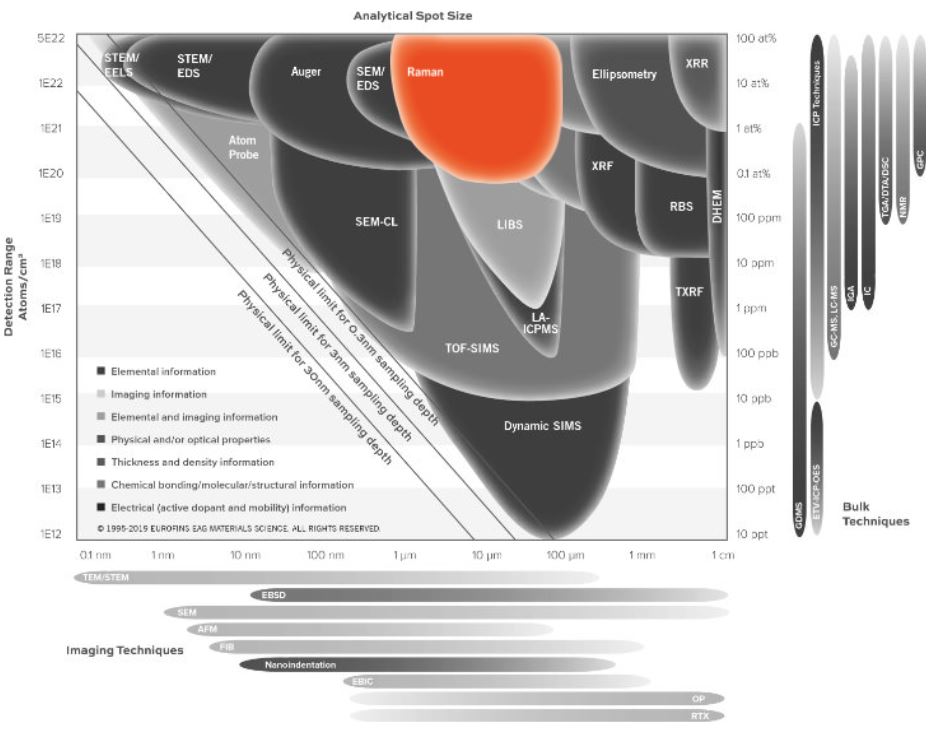Raman Spectroscopy
Home » Our Techniques » Spectroscopy » Raman
Raman Spectroscopy enables the determination of chemical structure and the identification of compounds using vibrational spectroscopy. Raman Analysis has better spatial resolution than FTIR and enables the analysis of smaller dimensions, down to the 1 µm range.
Raman is an ideal technique for the qualitative analysis of organic and/or inorganic mixed materials and can also be employed for semi-quantitative and quantitative analysis. It is often used to:
- Identify organic molecules, polymers, biomolecules and inorganic compounds both in the bulk and in individual particles
- Imaging and depth profiling is used to map the distribution of components in mixtures, such as drugs in excipients, tablets and drug-eluting stent coatings
- Determine the presence of different carbon types (diamond, graphitic, amorphous carbon, diamond-like carbon, nanotubes, etc.) and their relative proportions
- Determine inorganic oxides and their valence state
- Measure the stress and crystalline structure in semiconductor and other materials
Ideal Uses of Raman
- Firstly, identifying the molecular structure of organic and inorganic compounds for contamination analysis, material classification
- Secondly, stress measurements
- Thirdly, characterization of carbon layers (graphitic v. diamond)
- Lastly, orientation (random v. organized structure)
Strengths
- Capable of identifying organic functional groups and often specific organic compounds
- Spectral libraries for compound identification
- Typically non-destructive
- Minimum analysis area: ~1 µm (better than FTIR)
Limitations
- Limited surface sensitivity (typical sampling volumes are ~0.8 µm)
- Minimum analysis area: ~1 µm (not as good as Auger or TOF-SIMS)
- Limited inorganic information
- Typically not quantitative (needs standards)
- Fluorescence (much more intense than the Raman signal) can limit Raman usefulness
Raman Technical Specifications
- Signal Detected: Raman scattering (photons)
- Elements Detected: Chemical and molecular bonding information
- Detection Limits: ≥1 wt%
- Depth Resolution: Confocal mode 1 – 5 µm
- Imaging/Mapping: Yes
- Lateral Resolution/Probe Size: ≥1 µm
In conclusion, EAG offers our customers Raman services to analyze defects, particles and contaminants, identify materials in small areas, and to measure stress. In addition, the resulting data helps our clients resolve problems quickly, reduce cycle times, and improve production processes. We believe that no competing lab can match the skill set and experience of our staff. Moreover, you can count on fast turnaround times, accurate data, and person-to-person service, ensuring you understand the information that you receive.
Would you like to learn more about using Raman Spectroscopy?
Contact us today for your Raman Spectroscopy needs. Please complete the form below to have an EAG expert contact you.

